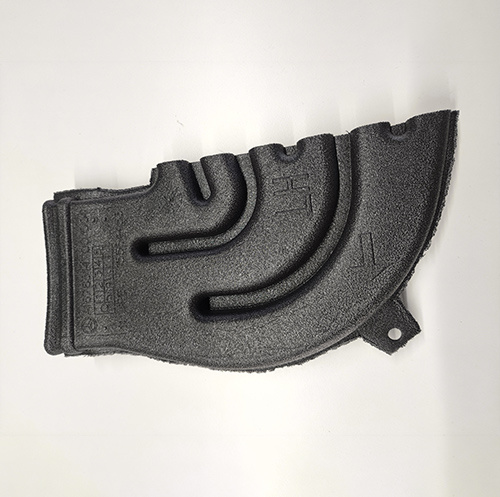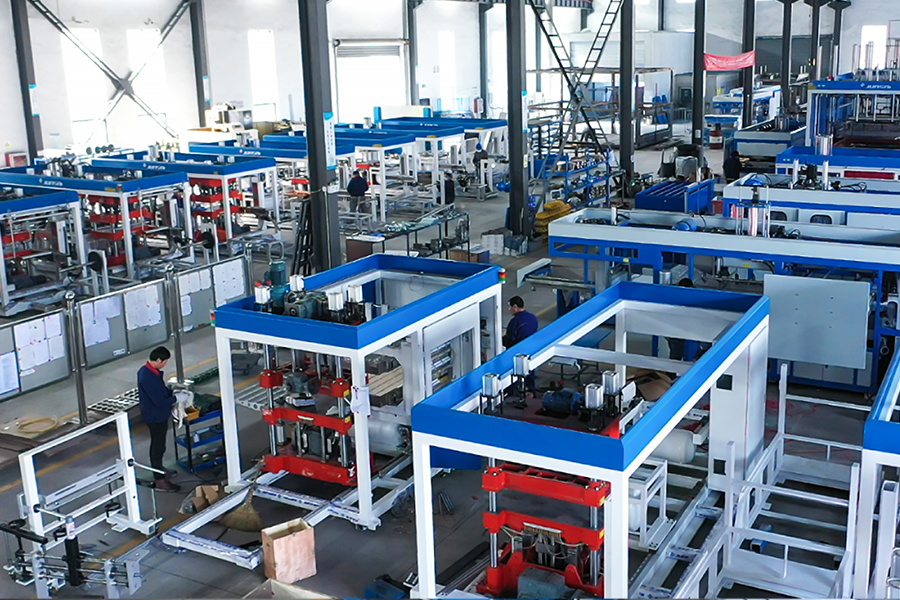The Evolution of Customized Automatic Vacuum Forming Technology: A Comprehensive Guide
2025-07-19
The Evolution of Customized Automatic Vacuum Forming Technology
Introduction to Vacuum Forming Technology
Vacuum forming is a widely-used manufacturing process that involves molding plastic sheets into specific shapes using heat and vacuum. This technique is not only efficient but also versatile, making it ideal for various applications across multiple industries, including packaging, automoti
The Evolution of Customized Automatic Vacuum Forming Technology
Introduction to Vacuum Forming Technology
Vacuum forming is a widely-used manufacturing process that involves molding plastic sheets into specific shapes using heat and vacuum. This technique is not only efficient but also versatile, making it ideal for various applications across multiple industries, including packaging, automotive, and consumer goods. The customization aspect of vacuum forming has undergone significant evolution, driven by technological advancements and increasing consumer demands.
Understanding Automatic Vacuum Forming Machines
Automatic vacuum forming machines are designed to streamline the production process by automating key functions. This evolution of machinery has improved precision, reduced production costs, and enhanced product quality. Let’s delve into the different components that make up these advanced machines:
Key Components of Automatic Vacuum Forming Machines
1. **Heating Elements:** These are critical for softening the plastic sheets before molding. Advanced machines employ even heating technologies to ensure uniform temperature distribution.
2. **Molding Stations:** The design of molding stations has significantly improved, allowing for intricate and customized shapes to be formed.
3. **Vacuum Pumps:** High-efficiency vacuum pumps ensure that the plastic sheets are tightly formed against the mold, minimizing defects.
4. **Control Systems:** Modern machines are equipped with sophisticated control systems that allow for real-time monitoring and adjustments, ensuring optimal performance.
The Importance of Customization in Vacuum Forming
Customization has become a key driver in the evolution of vacuum forming technology. Businesses are increasingly seeking tailored solutions to meet their specific needs. Customized vacuum forming allows for:
- Unique product shapes
- Enhanced branding opportunities
- Improved functionality and performance
The Advantages of Customized Vacuum Forming Technology
The advancement of automatic vacuum forming technology offers numerous benefits:
Cost-Effectiveness
Automated processes reduce labor costs and minimize material wastage, leading to significant savings for manufacturers.
Speed and Efficiency
With the integration of automation, production times have dramatically decreased, allowing companies to meet tight deadlines without compromising quality.
High-Quality Outputs
Precision engineering in modern machines leads to high-quality, consistent products that meet stringent industry standards.
Applications of Customized Vacuum Forming
Customized vacuum forming technology finds applications in various sectors, such as:
1. Packaging Industry
In the packaging sector, vacuum forming is utilized to create protective, lightweight, and visually appealing packaging solutions. Custom designs help products stand out on shelves while ensuring safety during transit.
2. Automotive Industry
In automotive manufacturing, vacuum forming is employed to produce interior components, such as dashboards and consoles. The ability to create customized parts that fit specific models enhances the overall vehicle design and functionality.
3. Consumer Goods
From customized trays to intricate displays, consumer goods manufacturers benefit from vacuum forming's adaptability, allowing for innovative product designs that cater to consumer preferences.
Technological Innovations in Vacuum Forming
The evolution of automatic vacuum forming technology has been marked by several key innovations:
1. Advanced Materials
The introduction of new, high-performance thermoplastics has expanded the capabilities of vacuum forming, enabling the production of more durable and lightweight products.
2. Software Integration
Sophisticated software solutions for design and simulation have simplified the process of creating molds, allowing for quicker prototyping and reduced lead times.
3. Sustainability Trends
With growing environmental concerns, the vacuum forming industry is moving towards sustainable practices, using recyclable materials and energy-efficient machines to minimize its ecological footprint.
The Future of Customized Vacuum Forming Technology
As industries continue to evolve, the future of customized automatic vacuum forming technology appears promising. Key trends to watch include:
1. Increased Automation
Automation will continue to dominate the landscape, with advancements in robotics and AI leading to even more efficient and precise manufacturing processes.
2. Enhanced Customization Options
The demand for personalized products will drive innovation, prompting manufacturers to develop technologies that cater to an ever-changing market.
3. Focus on Sustainability
Sustainability will remain a crucial factor, with a push towards eco-friendly materials and manufacturing processes that reduce waste and energy consumption.
Challenges Facing the Vacuum Forming Industry
Despite the numerous advancements, the vacuum forming industry faces several challenges:
1. Material Limitations
While new materials are emerging, there are still limitations regarding the types of plastics that can be effectively used in vacuum forming.
2. Competition with Other Manufacturing Processes
As other manufacturing processes, such as injection molding, continue to advance, vacuum forming must demonstrate its unique advantages to remain competitive.
3. Keeping Pace with Technological Advancements
Staying updated with the rapid pace of technology can be a challenge for manufacturers, particularly smaller companies with limited resources.
FAQs About Customized Automatic Vacuum Forming Technology
1. What is the difference between vacuum forming and other plastic molding processes?
Vacuum forming involves heating a plastic sheet and using vacuum pressure to mold it against a shape, while other methods, like injection molding, involve injecting molten plastic into a mold.
2. Can vacuum forming be used for large-scale production?
Yes, vacuum forming is suitable for large-scale production, especially for items that require low to medium quantities with high customization.
3. What types of materials are commonly used in vacuum forming?
Common materials include ABS, PVC, PETG, and polystyrene, each offering different properties suited for specific applications.
4. How long does the vacuum forming process typically take?
The time required varies based on the complexity of the design and the size of the product; however, modern automated systems can produce items in mere minutes.
5. What industries benefit the most from vacuum forming technology?
Industries such as packaging, automotive, consumer goods, and medical devices use vacuum forming extensively due to its versatility and efficiency.
Conclusion
The evolution of customized automatic vacuum forming technology exemplifies the industry's adaptability and innovation. This manufacturing process has not only revolutionized how products are designed and produced but also opened doors to new possibilities for customization. As technology continues to advance, we can expect further enhancements that will drive efficiency, sustainability, and creativity in the vacuum forming sector. Embracing these changes is crucial for manufacturers seeking to stay competitive in an ever-evolving market.
Keywords:
Related information
The Evolution of Customized Automatic Vacuum Forming Technology: A Comprehensive Guide
The Evolution of Customized Automatic Vacuum Forming Technology
Introduction to Vacuum Forming Technology
Vacuum forming is a widely-used manufacturing process that involves molding plastic sheets into specific shapes using heat and vacuum. This technique is not only efficient but also versatile, making it ideal for various applications across multiple industries, including packaging, automoti
2025-07-19
The Future of Manufacturing: Investing in a New Home Vacuum Forming Machine
In the landscape of manufacturing and packaging machinery, the introduction of a new home vacuum forming machine can significantly transform production capabilities. Vacuum forming is a widely used method for creating plastic parts and packaging, which involves heating a thermoplastic sheet until it is pliable, then forming it over a mold using vacuum pressure. This technology is not only versatil
2025-07-18
Harnessing Data Analytics to Enhance Performance in Renowned Forming Equipment
Harnessing Data Analytics to Enhance Performance in Renowned Forming Equipment
Table of Contents
Introduction to Data Analytics in Forming Equipment
The Importance of Data Analytics in Manufacturing
Key Data Analytics Techniques for Forming Equipment
Real-World Case Studies of Data Analytics in Action
Challenges in Harnessing Data Analytics
Future Trends in Data Analytics
2025-07-17












